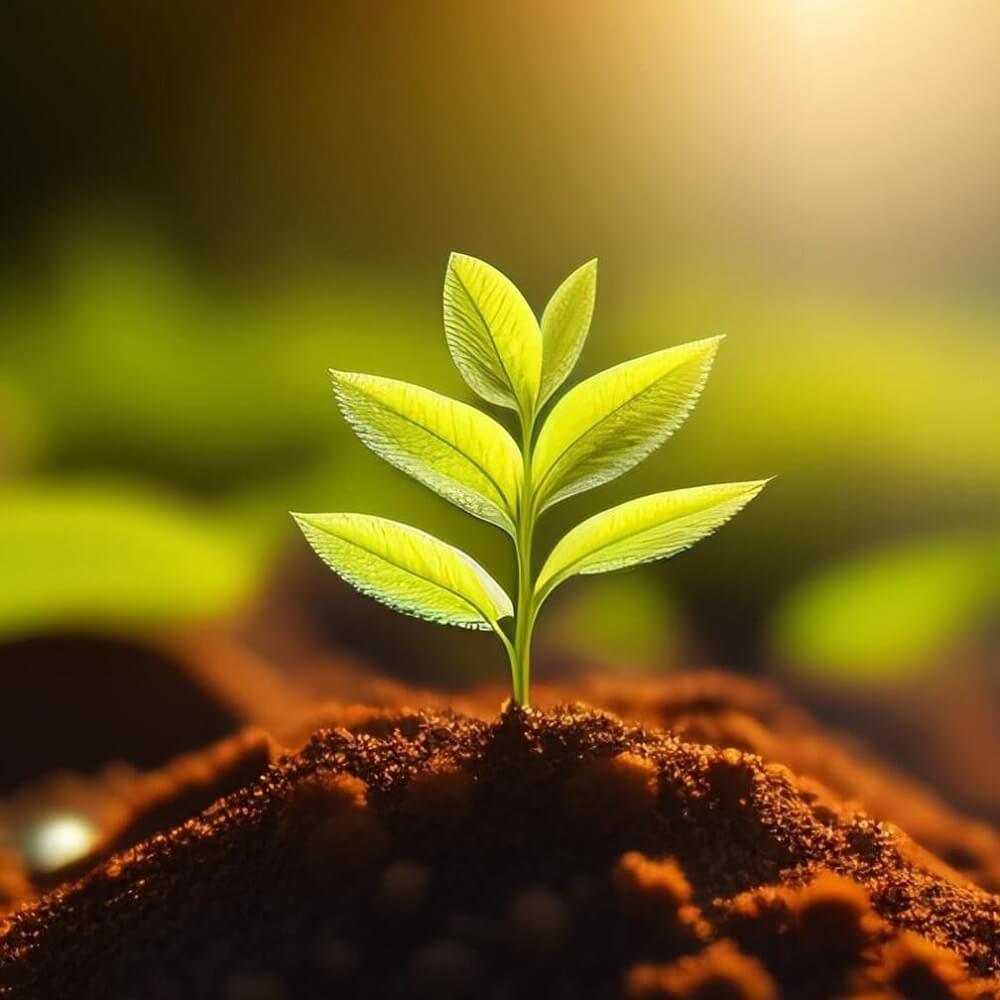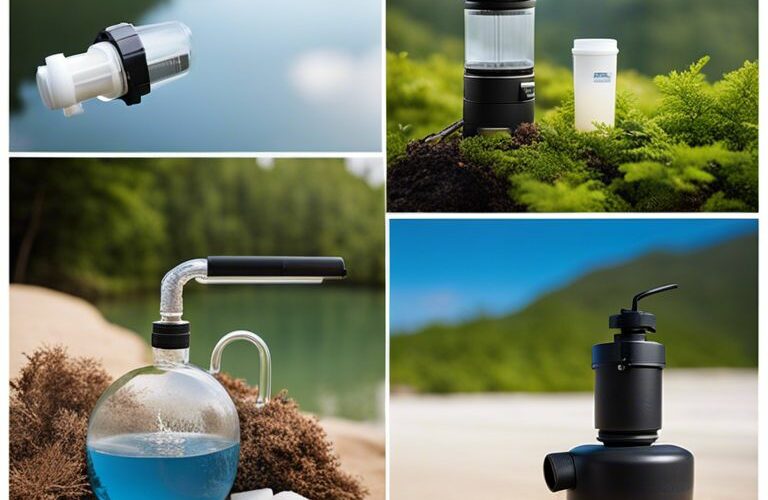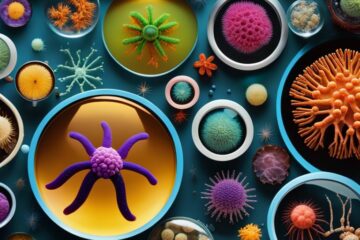Embark on a journey to enhance your water quality with Simple DIY Water Filtration Systems. In a world where water contamination is a pressing issue, taking the initiative to purify your drinking water can make a significant difference in your health and well-being. Unfiltered water can contain harmful contaminants such as bacteria, viruses, chemicals, and heavy metals that pose serious health risks. In this blog post, we will explore several easy-to-build water filtration systems that can help you achieve crystal-clear and pure drinking water right at home.
Table of Contents
Understanding Water Contamination
Your journey to creating DIY water filtration systems begins with understanding the various ways water can become contaminated. Whether you get your water from a well, municipal supply, or surface source, contamination can occur at any point in the water cycle. By educating yourself on common contaminants and their health implications, you can take proactive steps to ensure your drinking water is clear and pure.
Common Contaminants in Water
The presence of bacteria, viruses, heavy metals, organic chemicals, and sediments are among the most common pollutants found in water sources. These contaminants can enter the water supply through various means such as agricultural runoff, industrial discharge, and untreated sewage, posing serious health risks to consumers.
Health Implications of Contaminated Water
Water contaminated with bacteria and viruses can lead to severe illnesses like diarrhea, cholera, and typhoid fever. Exposure to heavy metals such as lead and mercury over time can result in neurological damage and developmental issues, especially in children. Organic chemicals like pesticides and pharmaceuticals have been linked to cancer and reproductive problems.
Plus, sediments in water can affect its taste, odor, and clarity, making it less appealing to drink. It is crucial to address water contamination issues promptly to safeguard your health and well-being.
Basics of Water Filtration
Clearly, ensuring that we have access to clean and pure drinking water is essential for our health and well-being. Water filtration systems play a crucial role in removing impurities and contaminants from our water sources, providing us with safe and potable water for consumption.
How Water Filtration Works
Filtration is the process of removing impurities and contaminants from water by passing it through a porous material or a chemical substance. This process helps in trapping debris, bacteria, chemicals, and other harmful substances, ensuring that the water is safe for consumption.
Water filtration systems work by using physical barriers, chemical processes, or biological mechanisms to purify the water. These systems can range from simple filtration pitchers to advanced reverse osmosis systems, each with its own unique method of removing impurities from the water.
Types of Water Filtration Systems
Water filtration systems come in various types, each designed to target specific contaminants and impurities present in the water. Some of the most common types of water filtration systems include:
- Activated Carbon Filters – These filters use activated carbon to absorb impurities and contaminants from the water. They are effective in removing chlorine, volatile organic compounds (VOCs), and bad odors.
- Reverse Osmosis Systems – This system uses a semipermeable membrane to remove ions, molecules, and larger particles from the water. It is highly effective in purifying water and removing a wide range of contaminants.
- UV Water Purifiers – UV purifiers use ultraviolet light to disinfect water and kill bacteria, viruses, and other microorganisms present in the water.
- Gravity Water Filters – These filters rely on the force of gravity to push water through a filtration system, removing sediments, bacteria, and parasites from the water.
- Ion Exchange Filters – These filters use ion-exchange resins to remove heavy metals like lead, mercury, and cadmium from the water, replacing them with less harmful ions.
The importance of choosing the right water filtration system cannot be overstated. Water contaminated with harmful substances can have serious health implications, including gastrointestinal issues, reproductive problems, and even cancer. After all, having a reliable water filtration system in place is crucial for ensuring that you and your family have access to clean and safe drinking water.
| Activated Carbon Filters | Remove chlorine, VOCs, and bad odors |
| Reverse Osmosis Systems | Remove ions, molecules, and larger particles |
| UV Water Purifiers | Disinfect water and kill bacteria, viruses |
| Gravity Water Filters | Remove sediments, bacteria, parasites |
| Ion Exchange Filters | Remove heavy metals like lead, mercury |
Materials for DIY Water Filters
Now let’s delve into the essential materials needed to create your own DIY water filtration systems. These common and easily accessible materials can help you achieve clear and pure drinking water right at home.
Activated Charcoal
Activated charcoal is a highly porous material that is effective in removing impurities and contaminants from water. By attracting and absorbing pollutants such as chemicals, toxins, and bacteria, activated charcoal helps improve the taste and odor of water.
When water passes through activated charcoal, the pores trap harmful substances, leaving you with cleaner and safer drinking water. You can incorporate activated charcoal in your DIY filter system to enhance its filtration capabilities and ensure that your water is clear and pure.
Sand and Gravel
An important component of many water filtration systems, sand and gravel act as natural filters that can effectively remove sediment, dirt, and larger particles from water. It provides a physical barrier that helps prevent contaminants from passing through, resulting in cleaner and safer drinking water.
When water flows through layers of sand and gravel, these materials trap impurities, allowing only clean water to pass through. Consider utilizing sand and gravel in your DIY filtration setup to enhance the filtration process and ensure that your water is safe for consumption.
Ceramic Components
Materials such as ceramic filters and ceramic balls are commonly used in water filtration systems due to their effectiveness in removing bacteria and pathogens. These components have tiny pores that help in trapping contaminants and ensuring that the water that emerges is clean and safe to drink.
By incorporating ceramic components in your DIY water filter, you can enhance the filtration process and ensure that your drinking water is free from harmful microorganisms. These materials are durable and provide long-lasting filtration capabilities for your peace of mind.
Ultraviolet (UV) Light Solutions
An innovative approach to water filtration, Ultraviolet (UV) light solutions utilize UV light to deactivate harmful bacteria and viruses in water. By exposing water to UV light, these systems can effectively sterilize and purify your drinking water, making it safe for consumption.
Consider incorporating UV light solutions in your DIY water filtration system to ensure that your water is free from harmful pathogens. While UV light does not remove physical impurities, it offers a powerful disinfection method that can provide you with clear and pure drinking water.
Simple DIY Water Filtration Systems
Not only are water filtration systems essential for ensuring access to clean and safe drinking water, but they can also be made easily at home using simple materials. Here are a few DIY water filtration systems that you can create to enjoy clear and pure drinking water.
Bio-Sand Filter
On the quest for clean drinking water, the bio-sand filter is a natural and effective solution. This filtration system works by utilizing layers of sand and gravel to remove impurities and pathogens from the water. When water passes through the bio-sand filter, microorganisms and debris are trapped in the sand bed, allowing only clean water to flow through.
On top of being low-cost and easy to maintain, bio-sand filters can remove up to 98% of bacteria and harmful particles from water, making it safe for consumption.
Charcoal and Sand Filter
Charcoal and sand filters are another effective DIY water filtration system that can be put together with minimal effort. The combination of charcoal and sand works to absorb impurities and improve the taste of water. This filtration method is particularly helpful in removing chlorine, pesticides, and other contaminants from water.
Charcoal and sand filters are known for their affordability and simplicity. By using this system, you can enjoy clear and refreshing drinking water right in the comfort of your home.
Charcoal and sand filters are a popular choice for DIY water filtration due to their efficiency in removing impurities and improving water quality. The charcoal is effective in adsorbing organic compounds and odor-causing substances, while the sand helps to trap solid particles and sediment.
Solar Disinfection System
Charcoal can also play a crucial role in a solar disinfection system, which utilizes the sun’s UV rays to kill bacteria and pathogens in water. By placing water in clear plastic bottles and exposing them to sunlight for a few hours, the combination of heat and UV radiation effectively purifies the water.
With a solar disinfection system, you can deactivate harmful pathogens and reduce the risk of waterborne diseases, making it a simple yet powerful method for clean drinking water.
With the use of commonly found materials such as charcoal, sand, and sunlight, it is possible to create DIY water filtration systems that are both effective and sustainable. By understanding the principles behind these filtration methods, you can take control of your water quality and ensure the health and well-being of yourself and your loved ones.
Enhancing Your DIY Water Filtration
Incorporating Boiling
Filtration can be enhanced by incorporating boiling into your DIY water filtration system. Boiling water is one of the most effective methods of killing harmful bacteria, parasites, and viruses that may be present in untreated water sources. By bringing the water to a rolling boil for at least one minute (or three minutes at higher altitudes), you can ensure that the water is safe to drink.
After boiling the water, allow it to cool before transferring it to your filtration system. Boiling should be used as a preliminary step before running the water through any mechanical or chemical filtration media to further enhance the purity of your drinking water.
Using Chemical Disinfection
Your DIY water filtration system can benefit from using chemical disinfection methods to ensure that all biological contaminants are effectively neutralized. Chemical disinfectants such as chlorine dioxide, iodine tablets, or household bleach can be added to the water to kill any remaining pathogens.
It is important to follow the manufacturer’s instructions when using chemical disinfectants to ensure safe levels of concentration in the water. After adding the disinfectant, allow the water to sit for the recommended contact time to eliminate any remaining bacteria or viruses before consuming.
The use of chemical disinfection is especially crucial when sourcing water from unknown or potentially contaminated sources. By incorporating this additional step into your DIY water filtration system, you can ensure that your drinking water is free from harmful microorganisms and safe for consumption.
Adding a UV Light Stage
Light can be an effective tool in enhancing your DIY water filtration system. Adding a UV light stage to your filtration process can help to eliminate any remaining bacteria, viruses, and protozoa that may have survived previous filtration methods.
UV light works by disrupting the DNA of microorganisms, rendering them unable to reproduce or cause infection. This additional step in your water filtration system can provide an extra layer of protection against waterborne illnesses and ensure that your drinking water is clear and pure.
With the inclusion of a UV light stage, you can be confident in the quality of your drinking water, knowing that even the smallest microorganisms have been neutralized. This advanced technology is a valuable addition to any DIY water filtration system seeking to provide safe and clean drinking water.
Safety and Maintenance of DIY Filtration Systems
After setting up your DIY water filtration system, it is crucial to ensure its safety and perform regular maintenance to keep it functioning effectively. By following simple steps for safety and maintenance, you can enjoy clear and pure drinking water at home.
Regular Checks and Cleaning
With regular use, sediment and contaminants can accumulate in your filtration system, compromising its efficiency. It is important to regularly check the system for any signs of clogging or wear and tear. For systems with replaceable filters, follow manufacturer guidelines for cleaning or replacing them. Clean the exterior of the system with a mild solution and ensure all parts are securely connected.
Assessing Water Quality
One essential aspect of maintaining a DIY water filtration system is to assess the quality of the water it produces. Conduct periodic water tests to check for contaminants and ensure the filtration system is working effectively. Look for any changes in water taste, odor, or appearance, as these could indicate a need for maintenance or replacement of components.
One of the most common indicators of water contamination is cloudiness or an unpleasant taste, which could point to a clogged or ineffective filtration system. Regular water testing can provide valuable insights into the performance of your DIY filtration system and help you make informed decisions about its maintenance.
When to Replace Components
Cleaning and replacing filtration components at the recommended intervals is essential to maintain the efficiency of your DIY water filtration system. Over time, filters can become saturated with contaminants, reducing their effectiveness. Regularly check the condition of filters and other components, and replace them according to manufacturer guidelines.
Cleaning and replacing components promptly can prevent bacterial growth, improve water quality, and extend the lifespan of your filtration system. By staying proactive with maintenance and component replacement, you can ensure consistent access to clean and safe drinking water for you and your family.
Tackling Specific Contaminants
Removing Biological Contaminants
Keep in mind that biological contaminants such as bacteria, viruses, and parasites can pose serious health risks if consumed through contaminated water sources. To successfully remove these harmful microorganisms, consider utilizing filtration methods such as UV sterilization or chlorine treatment.
Tackling biological contaminants is crucial in ensuring the safety and purity of your drinking water. Investing in a quality filtration system that specifically targets these microorganisms will provide you and your family with clear and pure drinking water, free from harmful pathogens.
Filtering Out Chemicals and Heavy Metals
Any DIY water filtration system should also focus on filtering out harmful chemicals and heavy metals like lead, mercury, and arsenic. Activated carbon filters are highly effective in removing these contaminants, ensuring that your drinking water is safe for consumption.
The presence of chemicals and heavy metals in drinking water can have detrimental effects on your health over time. By incorporating a filtration system that specifically targets these dangerous substances, you can rest assured that your water is clean and healthy to drink.
The efficiency of activated carbon filters in removing chemicals and heavy metals is well-documented, making them a popular choice for households looking to improve their water quality.
Addressing Turbidity and Sediment
The presence of heavy sediment and turbidity in water not only impacts its taste and appearance but can also indicate the presence of other contaminants. To address these issues, consider using sediment filters or reverse osmosis systems that are designed to effectively remove particles and improve water clarity.
Heavy sedimentation in water sources can clog pipes, damage appliances, and impact the overall quality of drinking water. By implementing filtration systems that target turbidity and sediment, you can ensure that your water is crystal clear and free from harmful pollutants.
Case Studies: Successful DIY Filtration
To showcase the effectiveness of DIY filtration systems, let’s delve into some case studies where individuals have successfully implemented their own solutions for clean and pure drinking water.
- Rural Community in Africa: Implemented a simple sand and gravel filtration system that reduced bacterial contamination by 99.9%.
- Family in South America: Utilized clay pot filters to eliminate 95% of heavy metals and impurities from their well water.
- Survivalist in North America: Constructed a homemade charcoal filter that improved water clarity by 90% during a camping trip.
Rural Innovations
To address the water scarcity issue in rural areas, innovative solutions are essential. DIY filtration systems have proven to be cost-effective and sustainable for communities with limited resources. By incorporating local materials like sand, gravel, and clay, these systems can significantly improve the quality of drinking water.
Urban Applications
Rural communities are not the only ones who can benefit from DIY filtration systems. Urban areas facing water contamination challenges can also implement simple yet effective solutions to ensure access to clean drinking water. By utilizing household items like charcoal, sand, and cloth, urban dwellers can purify their tap water and reduce the risk of waterborne diseases.
With increasing concerns about water pollution and environmental sustainability, DIY filtration systems offer a practical and empowering solution for individuals to take control of their water quality.
Emergency Situations
For communities facing disasters or emergencies where access to clean water is limited, DIY filtration systems can be a lifesaving tool. By having the knowledge and skills to construct makeshift filters using basic materials, individuals can ensure they have a safe source of drinking water during challenging times.
A quick and effective filtration system can mean the difference between life and death in emergency situations, highlighting the importance of being prepared and knowledgeable about water purification methods.
Summing up
From above, it is evident that simple DIY water filtration systems can be a cost-effective and efficient way to ensure clear and pure drinking water. By using basic materials such as sand, gravel, and charcoal, individuals can easily build their own water filtration systems at home. These systems are effective in removing contaminants and improving water quality, making them a practical solution for those looking to access clean drinking water in a convenient way.
With the right knowledge and materials, anyone can create their own DIY water filtration system to enjoy safe and pure drinking water. By following the step-by-step instructions provided in this guide, individuals can take control of their water quality and ensure that their families have access to clean and healthy drinking water. It is empowering to know that such simple solutions are available to address the issue of water contamination, promoting better health and well-being for all.

Our contributing author is a passionate advocate for eco-friendly living and sustainability. With a background in eco-life, they are dedicated to inspiring and empowering individuals to adopt environmentally conscious lifestyles. Through insightful articles, they share practical tips, innovative solutions, and thought-provoking perspectives to promote a greener, more sustainable world. Join them on the journey towards eco-smart living and discover how small choices can make a big impact. 🌱









